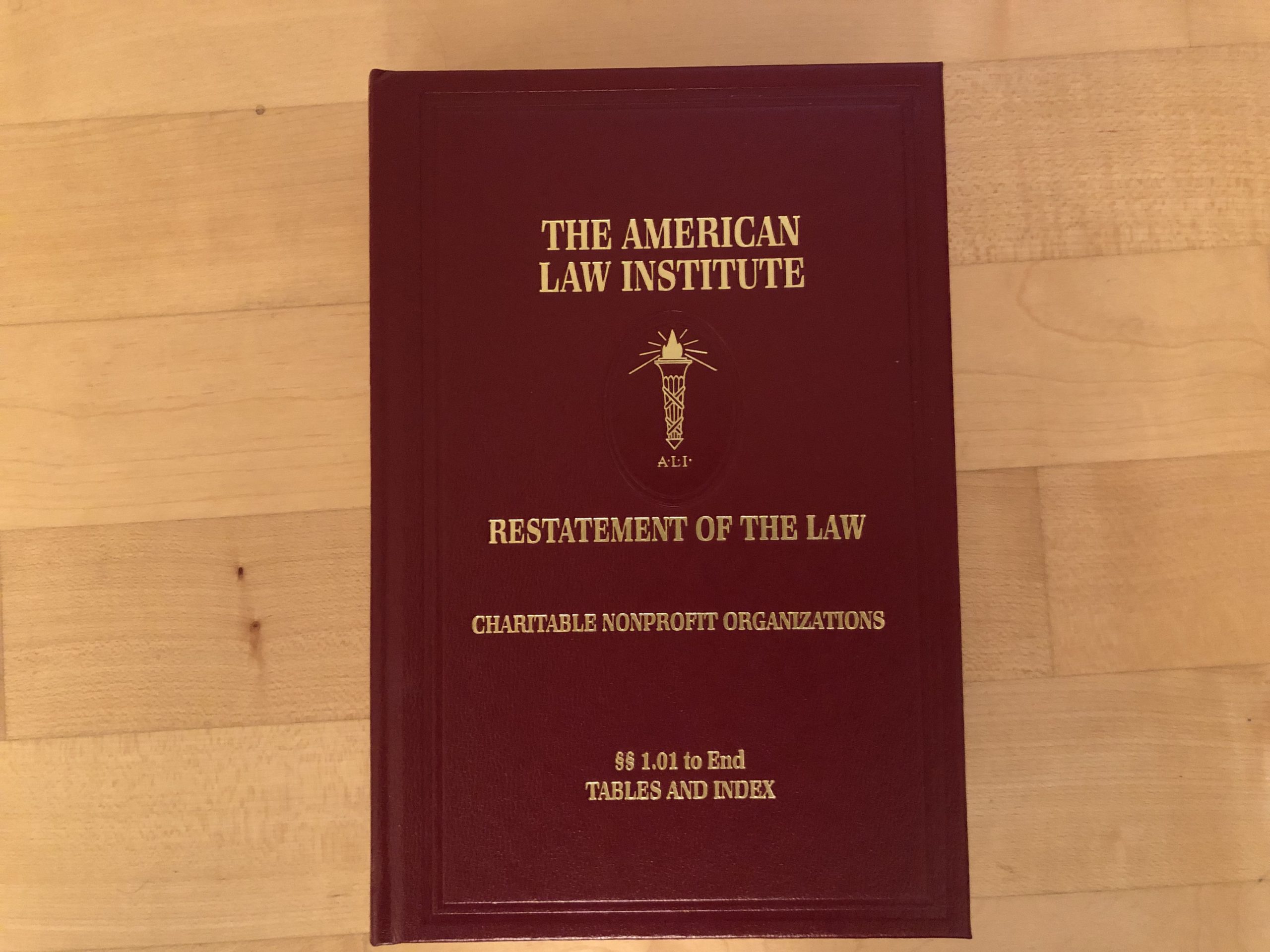
Restatement of the Law, Charitable Nonprofit Organizations is a treatise on the law of charities published by the American Law Institute. Restatements are highly respected secondary sources relied upon by lawyers, academics, judges, and others as persuasive, but not binding, authority.
This Restatement, published in 2021, is the first one focused on the law of charities in the United States. We’re very appreciative of UCLA School of Law professor Jill Horwitz, also the Founding Faculty Director, Program on Philanthropy and Nonprofits, who led the Restatement project as Reporter. You can watch Professor Horwitz and Consultant Marion R. Fremont-Smith (Harvard Kennedy School) describe the Restatement here. We’ll also discuss some specific provisions in the Restatement in future blog posts as it is truly an outstanding resource for those interested in the area of “nonprofit law.”
Chapters
Chapter 1 Definition and Choice of Form
Chapter 2 Governance and Management of Assets
Chapter 3 Changes to Purposes and Organization
Chapter 4 Restrictions on Assets; Pledges; Solicitation
Chapter 5 Government Regulation of Charities
Chapter 6 Standing of Private Parties
From the Introduction
One of the great strengths of charities is their diversity. From disaster relief to religion, art, environmental protection, relief of poverty, education, health care, and more, every community is touched by charitable activity. Charities represent a spectacular range in terms of size, number of employees, wealth, geographic coverage, sophistication, and sources of income. The law does more than tolerate this cacophony of charities, it encourages it. It is a sign of success that charities with diametrically opposed goals can be flourishing legal entities.
Charities do, however, share two critical commonalities. First, they are private. … With the rare exception of some governmental affiliates that seek charitable status, such as some public universities, charities are not public in the sense that they are not under the control of government any more than any other private, nongovernmental entity that is subject to government regulation or various types of oversight. Support form the government in the form of tax exemptions and other benefits does not make charities public or governmental entities.
Second, unlike for-profit entities, charities can neither be owned by private owners nor adopt the purpose of pursuing profits. Instead, they must have purposes that benefit the public, broadly defined, and those purposes must be identified in their organizational documents.
…
This Restatement focuses on the duties of those governing charities, the manner in which charitable assets must be protected, and the powers of public officers and private parties seeking to protect charitable assets. As is appropriate for a Restatement, this project focuses on common-law doctrine. For many subjects discussed in this Restatement – particularly those related to the definition of “charity,” governance, changes to a charity’s purpose, the roles of various regulators, restrictions on charitable assets, and standing – the common law is primary. Even in areas in which statutory law is dominant, the common-law rules are reflected in the statutes and influence their interpretation.
Symposium
I look forward to commenting on a paper to be presented at a Symposium on the Restatement in September jointly organized by the UCLA School of Law’s Program on Philanthropy and Nonprofits (launched in 2021) and Lowell Milken Institute for Business Law and Policy. More to follow.
